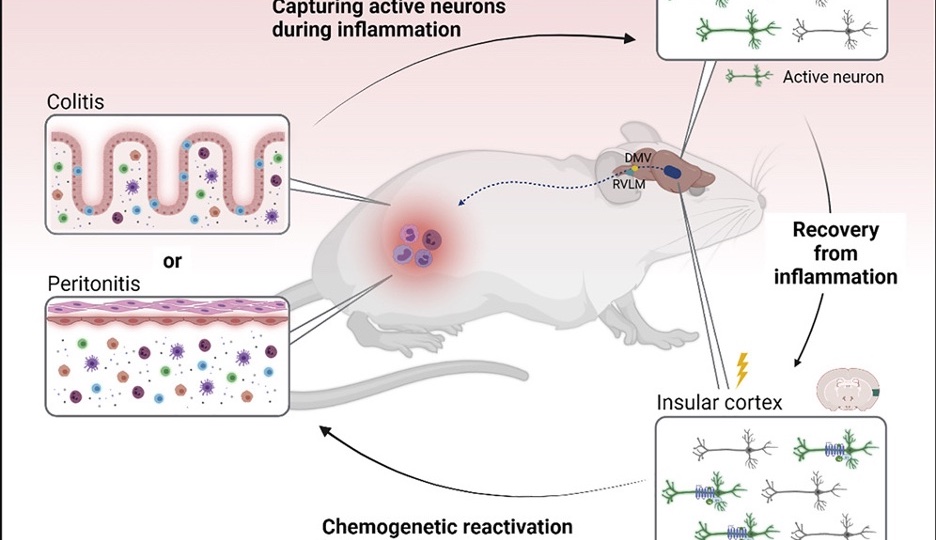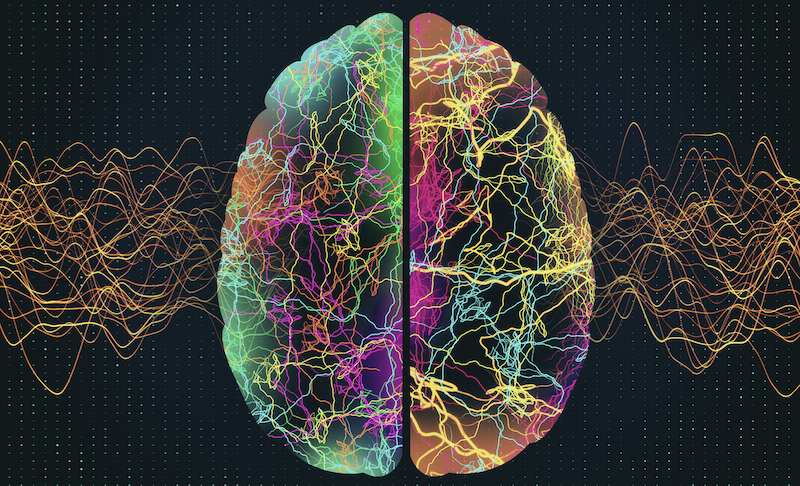Century-old mystery solved: Elusive fever-generating neurons have been found

- During an infection, the brain raises the body temperature, resulting in a fever. However, the neurons responsible for this have never been identified.
- According to a new study, a cluster of about 1,000 cells in the hypothalamus is necessary and sufficient to induce fever.
- The cells also play a role in sickness-related behaviors, such as appetite loss and warm-seeking behavior.
Infections are unpleasant. The crummy feeling is usually blamed on the pathogen attacking the body or the immune system attacking the pathogen. However, there is a third culprit pulling strings behind the scenes: the brain.
For almost a century, scientists have tried to identify which parts of the brain are responsible for orchestrating physiological and behavioral symptoms, such as fever and appetite loss. These symptoms are usually good in moderation and can help at eliminating pathogens, but they can also cause a lot of harm. Thus, finding these elusive sickness-inducing neurons and uncovering how they are activated could open the door to making sickness a little less crummy.
Neurobiologists at Harvard University have cracked open that door, according to a study recently published in Nature. The researchers have identified a small group of neurons in the brain of mice that can induce symptoms of sickness, including fever, appetite loss, and warm-seeking behavior.
Brain activity during a fever
During an infection, pathogens leave a trail of small molecules that do not belong in humans. For example, the membranes of many bacteria (including E. coli and Chlamydia) contain a molecule called lipopolysaccharide (LPS). Humans do not produce anything similar to this molecule; consequently, when immune cells find LPS, they sound the alarm, releasing signals that travel throughout the entire body. Previous studies have shown that the brain relies on these signals to induce fever. However, it has been unclear which cells are involved.
To home in on the fever-inducing brain region, Jessica Osterhout, a Harvard scientist who specializes in thermoregulation, injected LPS into mice and monitored for activity in 24 different brain regions. Neurons in twelve areas were activated. However, a cluster of about 1,000 neurons in a small region of the hypothalamus, called the preoptic area, drew their attention.
In the late 1930s, a group of neurologists discovered that they could induce hypothermia in cats by heating the preoptic area, which is about the size of the tip of a pen. About 80 years later, scientists discovered that the preoptic area contains thermoregulatory neurons that regulate body temperature by sensing ambient warmth and activating circuits to decrease body temperature. The neurons that Osterhout found, however, were located in a distinctly different region of the preoptic area than the warmth-sensing neurons. To her and her colleagues, it seemed that they might have discovered the long-sought-after fever-generating neurons.
Osterhout’s neurons generate fever and influence behavior
In addition to activating Osterhout’s neurons, LPS activated thousands of other neurons throughout the brain, any of which could be responsible for eliciting a fever. So, Osterhout and her colleagues needed evidence that their neurons were indeed responsible. To gather this evidence, they used techniques that allowed them to specifically remove or activate these neurons while leaving other cells unaffected.
They removed the suspected fever-generating neurons and injected the mice with LPS. The mice’s body temperature remained normal. This indicated that Osterhout’s neurons were at least necessary for causing fever, but were they alone sufficient? So the scientists tried another method: They activated the neurons in the absence of LPS, and the mice’s body temperature increased. It seemed that they had found the fever-generating neurons.
Activating Osterhout’s neurons did more than just cause a fever. It changed the mice’s behavior. When mice (and humans) are suffering from an infection, they exhibit behavioral changes, such as seeking out warmth and appetite loss. When the researchers activated the fever-generating neurons, the mice gravitated toward warmer regions of their cage and ate less food, indicating that the neurons also influenced appetite-loss and warm-seeking behavior.
Upon further examination, Osterhout and her colleagues also found that the fever-generating neurons were capable of detecting immune signals secreted by non-neuronal cells that were near both the blood-brain barrier and the fever-generating cells. The researchers suspect other neurons detect these signals as well, and they plan to study how these signals influence the behavioral changes associated with sickness.





